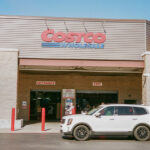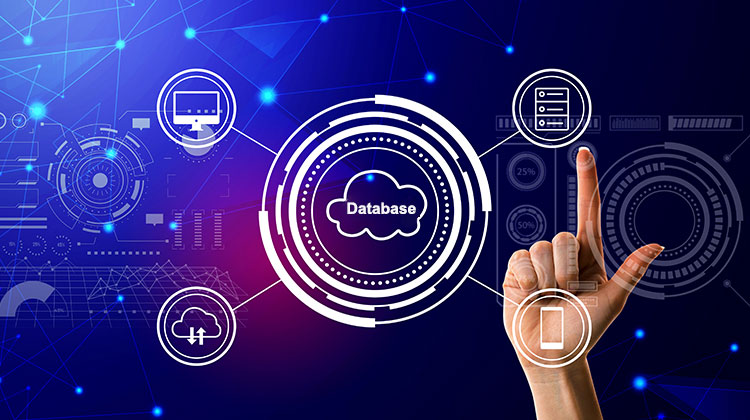We have looked at geospatial data and where it can be found. But what is it used for? This is a complex question. There are many ways you can use it. Some are related, and others are built on top of each other.
Geospatial data is often used to visualize the data on a map. A business might use this data to determine where their advertisements or stores should be located. A private equity firm could also use the data to determine which companies are worth investing in. A government agency might use a different type of analysis to determine the location of critical infrastructure and buildings.
We’ll be examining 10 common uses of geospatial data and some of the types of data that power them.
Top 10 uses of geospatial data & where to find the data you need
While geospatial data is most commonly used in scientific and government administration contexts it also has increasing commercial applications. Here are 10 ways to use geospatial data. in a variety of situations, including investment, retail, and insurance.
1. Mapping
Visualizing the geospatial data area is one of the most popular examples of geospatial information use. A map that is accurately drawn from location data can prove to be a powerful tool, regardless of whether it contains building footprints, transport routes, or other points of interest. Not just for travelers unfamiliar with a given area.
Mapping forms is the foundation for many other ways to use geospatial data.
SafeGraph’s Geometry data is a good place to begin. It uses polygons for the location, size, and relationship between different points of interest (POIs).
Also read: How Data Analytics Can Help You Generate More Leads
2. Site Selection
If you are a business or any other type of organization, You want to open a store in an area where customers and other supporters will likely visit. You also want to know when things have changed in a particular location. it is no longer possible, It’s time for it to be closed down and moved on. Both of these can be achieved with geospatial data.
When selecting or deselecting retail locations, there are many things to take into consideration. What are your current locations? Do other stores in the area have plans to compete with or help you? Are you close to the places where you want to attract customers? What is the accessibility of your target customers’ locations in terms of transportation?
Geospatial data can provide clues as to whether a particular location will succeed.
3. Visit Attribution
Geospatial data can also be used to tell the difference between someone actually visiting your store and just passing by. Let’s compare precise GPS data from mobile phones with accurate building footprint data You know how many people visited your store to purchase something? Or at the very least, look around.
This information can be used to search for points of interest nearby to determine if they offer opportunities to increase foot traffic or to place advertising to drive more people to your store.
4. Urban Planning
If you work in the public or government sector, geospatial data science applications and techniques can prove to be very useful. Based on data about where buildings are located (and what they look like), you can make sound decisions regarding community planning. Where people live, what they do to get there, and how they get there.
For example, You can plan construction for roads and other transportation systems to reduce walk/drive times to places people frequent, such as grocery shops. You can also plan to build critical facilities. like schools or hospitals, are located in areas that are easily accessible and receive a lot of foot traffic.
Foot traffic data is a great resource if you plan to use geospatial information in this context. This data can provide insights into when and where people are most active in your community, as well as their origins and destinations.
5. Network Planning
Another area of expertise is the planning of telecommunications systems. Which geospatial data could be useful? Take, for example, Providers can use foot traffic data to plan their infrastructure around the most popular areas of a neighborhood. This allows them to have as much coverage as possible while using as little hardware as possible. This can also influence the cost of setting up WiFi hotspots. Installations in high-traffic areas are more costly.
Other businesses can use the information they have about foot traffic to determine the scope of their telecom plan. This includes the location of their WiFi hotspots based on what they have available. They can also set bandwidth limits for their hotspots according to when they are most active.
6. Investment Research
If you are employed in an investment bank, private equity, or other financial institution, It can be very powerful to learn how to use geospatial information. Yet, it is often overlooked: A tool to help you build your portfolio. It is possible to combine location data for stores, points of interest, and foot traffic data to model and predict consumer behavior and movement patterns.
This data can be combined with other context data to give you a better understanding of the performance of the businesses that you invest in and which businesses are likely to experience upturns. Here’s where you can start: It is important to learn as much information as possible about local businesses in which you plan to invest in.
7. Competitive Intelligence
Knowing your competition is an important part of understanding how your business is performing. This includes knowing who and where they are located, as well as how their performance might impact yours. You can use geospatial data to determine how much influence your company has over where your customers are from and where your competition is.
You might be able to observe that customers prefer your store over the one owned by a competitor because it is more convenient in terms of parking and transport routes. You may find that your stores are too close in terms of driving distance and walk time. This could mean that they are competing for the same customers. You might also notice that the nearby stores you thought would be in competition with you are not. This could be because your target customers come from different areas and may have different demographics.
8. Risk Assessment
Another sector that makes use of geospatial applications is the insurance industry. In order to develop liability frameworks for buildings insurers must know certain geospatial characteristics. These traits include the exact location of a building, its size, and its proximity to other buildings. These attributes allow them to assess the vulnerability of a building to damage from weather or indirect causes (e.g. A spreading fire, vehicle accident, collapse, or any other type of damage.
Insurers also need to know information such as how many businesses are located in the same building and what they do. There are some businesses that present greater risks than others. This can impact risk assessment for operations nearby. Another factor to be considered is occupants. Accidents are more likely to occur if there are many people living in or visiting a building every day.
Also read: Top 10 Risk Management Software
9. Trade Area Analysis
Trade Area Analysis is a process in which geospatial data is integral. It is a large-picture representation of store site selection. Sometimes, it is not enough to look at the accessibility of a location and its proximity to competitors.
Consider census block groups (CBGs) as an example. Based on their lifestyles, is it possible for them to buy the product you are selling? Based on their income, would they be able to afford it? These questions will help you pinpoint your customer base more precisely and allows you to modify your site selection (amongst other things) to cater to those people most likely to patronize your stores.
Consider the proximity of competitors and their established status. If there is already a demand for your product or service, it will be difficult to succeed in that area. This is especially true for competitors who have built up their reputations over years. Perhaps you should look at another area that has a sufficient supply Your products or services are not in demand. It is possible to be more competitive against other businesses.
10. Consumer Insights
You may be able to get even more detailed insights into your customers’ shopping habits by using a specific geospatial data sample. You might be able to look at the brands that your customers shop in and see which stores they visit. You might then decide to sell products from that brand or to market them more heavily if they are already in your store. This could be done by making them the center of your rewards program or by having seasonal sales. It is important to satisfy consumers’ needs so they don’t need to go to other businesses to get what they want.
Another option is to examine businesses your customer’s visit before or after visiting yours. Imagine that you own a smoothie shop or another type of healthy restaurant. It is possible that customers go to yoga or gyms after visiting your shop. This could indicate that customers are likely to come to your store to fuel up for a workout, or to recharge after one. This knowledge can be used to approach these stores for cross-promotional opportunities, possibly on certain days or times.













Leave a comment